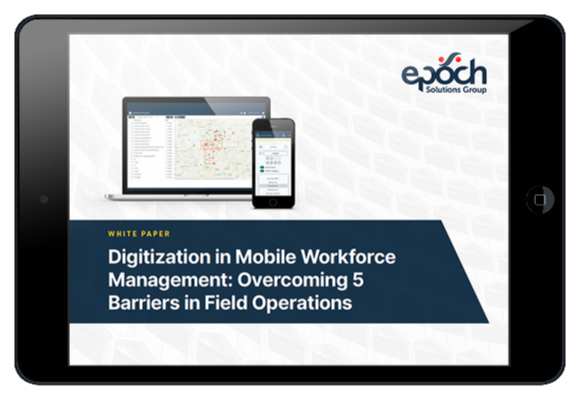The modern world is changing rapidly, and the technologies and infrastructure that support it must evolve alongside it. This is especially true for utility companies, whose infrastructure must keep pace with changing demands and new technology. One area that has become increasingly important for utilities in recent years is joint use asset management.
Joint use assets refer to the infrastructure components that multiple utility companies share, such as poles, wires, and conduits. They offer a range of benefits for utility companies, including cost savings, increased flexibility, and reduced infrastructure duplication. However, managing joint use assets comes with a unique set of challenges that can significantly impact the efficiency and reliability of the utility network. This article reviews the challenges of joint use assets—including overloaded poles, double poles, unauthorized attachments, conflicting needs, and regulatory compliance issues—and offers viable solutions.
Overloaded and Double Poles: Inventory is Key
Overloaded poles are a common problem with joint use assets, and they occur when too many companies attach their equipment to a single pole, exceeding its weight-bearing capacity. This can cause the pole to lean or even fall, leading to power outages, property damage, and safety hazards. Overloaded poles also make it difficult to perform maintenance and repair tasks, as it can be difficult to identify which company is responsible for the excess weight on the pole.
Conducting regular inspections and assessments of the poles helps identify any signs of overload, allowing utility companies to proactively address an issue before it leads to a safety hazard or outage. Additionally, utility companies can work together to develop load-sharing agreements to ensure that the weight on each pole is evenly distributed among the companies using the infrastructure.
Double poles are another issue that arises when a utility operates joint use assets. Double poles occur when new poles are installed next to existing poles rather than replacing them, resulting in two or more poles serving the same purpose. Aside from the fact that double poles can be unsightly, they pose a safety hazard and make it difficult to access and maintain the equipment, increasing the risk of power outages and other issues.
One solution to this common joint use asset problem is to conduct a comprehensive inventory of all existing poles and infrastructure to identify where double poles exist, enabling utility companies to prioritize which poles to remove or replace first. Utility companies also can work together to develop joint programs to replace double poles with a single pole that meets the needs of all companies involved.
Contact an Epoch Sales Consultant today ⟶
Policies, Collaboration, and Training Are Essential
Unauthorized attachments are another significant problem for joint use assets. Attaching equipment to joint use assets without proper authorization or approval can create safety hazards, reliability issues, and regulatory compliance problems. Unauthorized attachments can also interfere with the equipment of other utility companies, leading to service disruptions and other problems.
One effective way to reduce or eliminate unauthorized attachments is to develop and enforce clear policies and procedures for attaching equipment to joint use assets, including guidelines for when equipment can be attached, who can approve the attachment, and what equipment is allowed. Utility companies also can use advanced analytics and monitoring tools to identify unauthorized attachments and proactively address them before they become a problem.
Managing joint use assets can also present broader challenges. Conflicting needs are a common problem when multiple companies use the same infrastructure. For example, one company may need to access a pole to install new equipment, while another company may need to perform maintenance on the same pole at the same time. Managing these competing objectives can be a complex and time-consuming process, often requiring significant coordination and communication between the companies involved.
To resolve conflicting needs for joint use assets, utility companies should develop collaboration tools and processes that allow multiple providers to work together more effectively. These tools can include shared communication channels, such as online portals or chat groups, where companies can coordinate their activities and schedules. Additionally, utilities can develop joint work plans that identify which tasks need to be completed and when, allowing them to better coordinate and schedule their activities.
Regulatory compliance is another area that utility companies must contend with when managing joint use assets. Utilities must comply with a range of regulations and standards, including safety standards, environmental regulations, and industry-specific guidelines, and failure to comply can result in fines, legal liabilities, and damage to the company’s reputation.
To ensure joint assets are managed in a way that complies with applicable regulations, each utility company should develop its own robust compliance program that includes regular audits and assessments to identify any areas of non-compliance. The program also should include training for employees and contractors to ensure they understand the regulations and standards that apply to joint use assets. Additionally, utility companies can work together to develop joint compliance programs that ensure all companies using the infrastructure are meeting the relevant regulations and standards.
How an Asset Management Platform Can Help
Despite these challenges, joint use assets continue to be an essential part of the utility industry. Given the clear benefits of shared infrastructure, utility companies are finding innovative ways to address the difficulties associated with managing joint use assets.
One way that leading utility companies are successfully managing joint use assets is through the use of an asset management platform like EpochField. With EpochField, utility companies can gain visibility into the condition of joint use assets, such as overloaded and double use poles, along with the real-time situational awareness to manage unauthorized access, ensure safe and reliable power delivery, and meet the regulatory mandates governing the industry.
Highly configurable to meet each utility company’s unique operational requirements, EpochField offers these and other advanced features:
- Mobile offline collection and viewing of asset data for field personnel who are often working in remote locales, without an Internet connection
- High-performance digital maps that display geospatial data holistically and dynamically update as the system processes new data
- Configurable work order forms that are produced automatically based on field mapping data
Discover how the EpochField platform can transform your utility’s joint use asset management. Schedule a demo today.











